Interior designers use a variety of elements and principles to create a space that is aesthetically pleasing. The elements are the things we work with; the principles are what we do with them. There are seven main elements and eight main principles.
Elements of Design: Space, line, shape, form, color, value and texture.
Principles of Design: Balance, harmony, movement, pattern, emphasis, rhythm, contrast, and unity.
In this series, we’ll be taking apart each element and principle of design and illustrating them with images from some of our favorite projects. Today, we’re focusing on balance and harmony.
With the start of the New Year, many of us filled our Januaries with resolutions to be healthier, more organized, or more punctual – simply, to make our lives more balanced. We seek this balance in a number of ways, by eating fewer sweets or keeping our desks tidy. But another place we crave balance is within our homes.
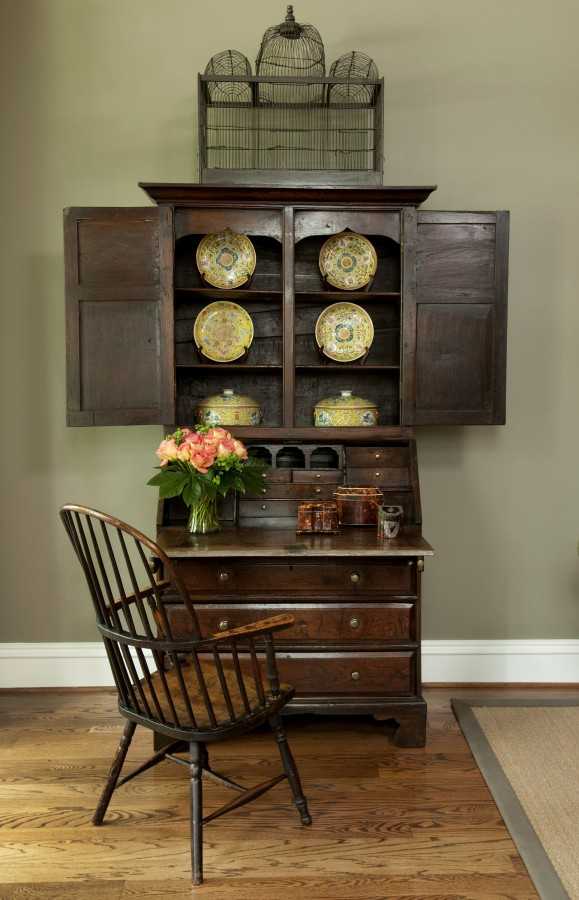
To understand balance and harmony in a design context, let us first define them:
bal·ance (n) /ˈbaləns/
Equilibrium achieved by arranging components symmetrically, asymmetrically, or radially.
har·mo·ny (n) /ˈhärmənē/
The combination of design elements; architecture and furnishings into a pleasing whole as the result of a delicate balance of unity and variety.
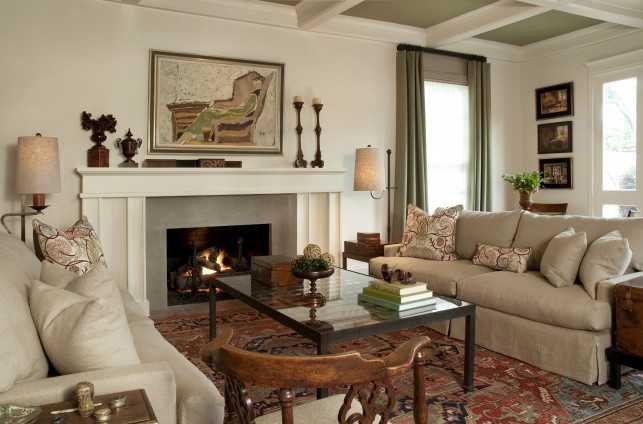
Symmetrical or formal balance creates a mirror image, such as this pair of sofas flanking the fireplace. It suggests orderliness, which we are attracted to because it is predictable and we know what to expect. But a well-designed symmetrical composition will also include asymmetrical elements to keep it from becoming boring. The candlesticks on the mantle are much more interesting placed on the right side balanced by the antique finials on the left
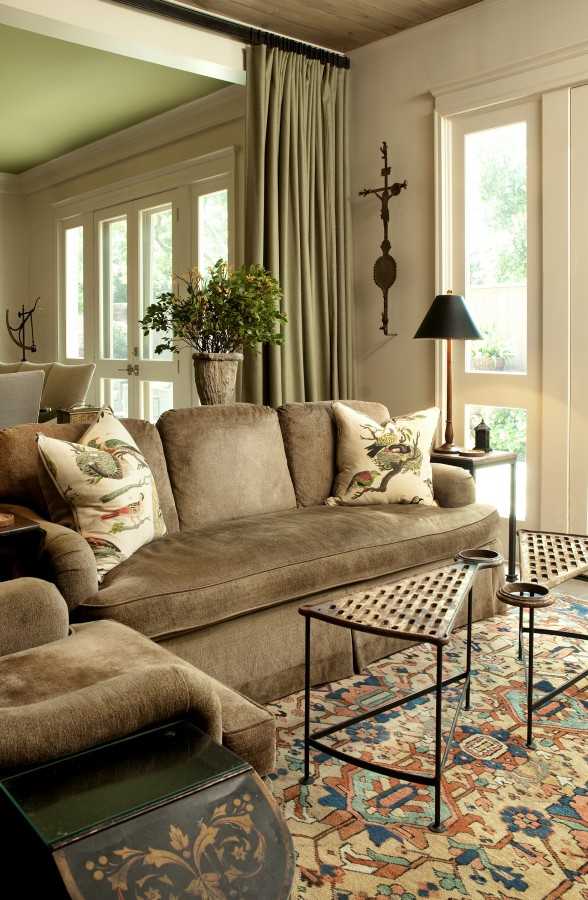 .
.
Asymmetrical or informal balance can be more difficult to accomplish. In the photo above, the interior drapery which only draws one way is balanced by a 16th century cross hung on the wall and the faux bois planter placed on the sofa table. Sometimes you just have to play with asymmetrical balance until it “feels” right.
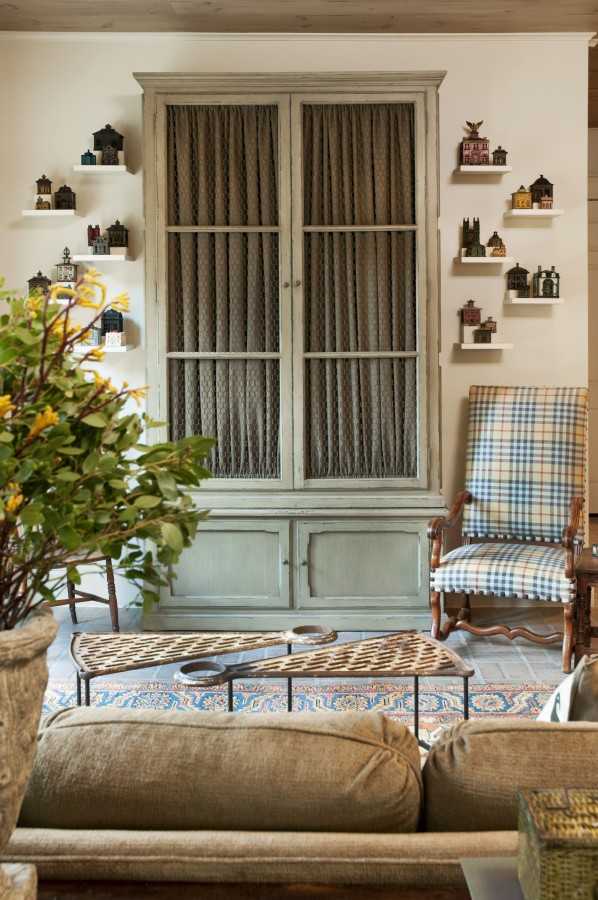
In the photo above, the collection of antique iron building banks displayed on floating shelves create a radial balance around the tall cabinet that houses a Television.
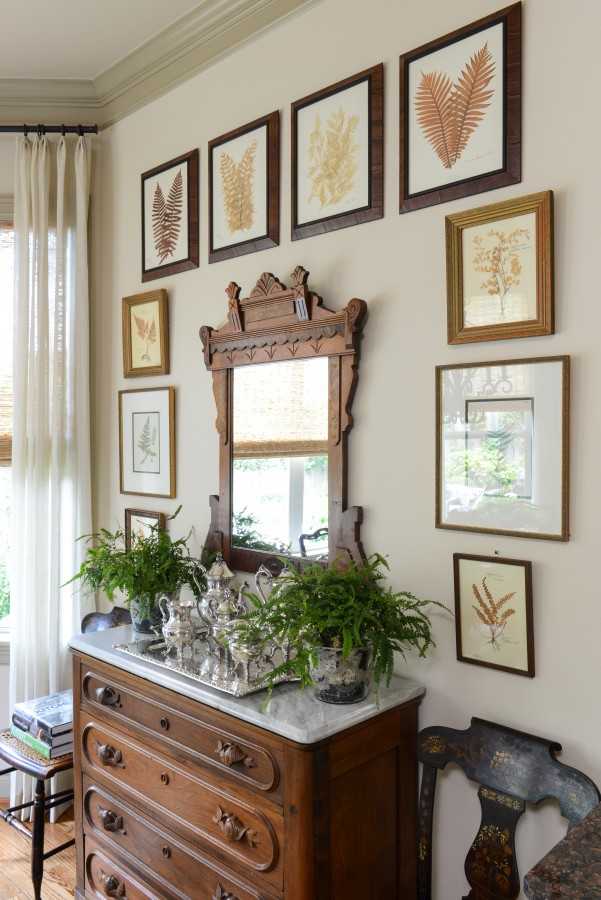
In this photo of a breakfast room (above), symmetrically hung fern prints create balance around the mirror above the chest, which is flanked by matching pairs of plants and chairs. The entire arrangement makes the whole wall feel anchored and thoughtfully composed.
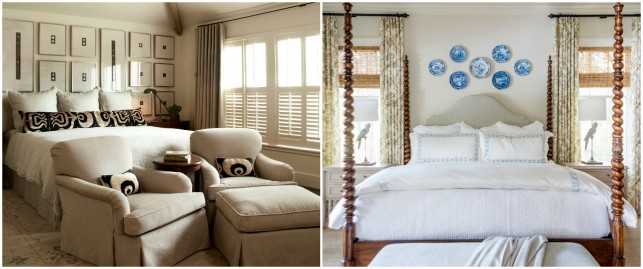
The monochromatic color scheme and the arrangement of the framed coins are what give balance to the master bedroom on the left; the matching bird lamps, drapery and symmetrical arrangement of plates pull together the room on the right.
As the weeks pass and we find ourselves in February, let us not forget the resolutions we made on the 1st. Before we can focus on balancing ourselves, our interiors are a great place to start. The right balance of unity and variety can bring harmony into our homes (and in turn our spirits!)
“Happiness is not a matter of intensity but of balance and order and rhythm and harmony.” – Thomas Merton

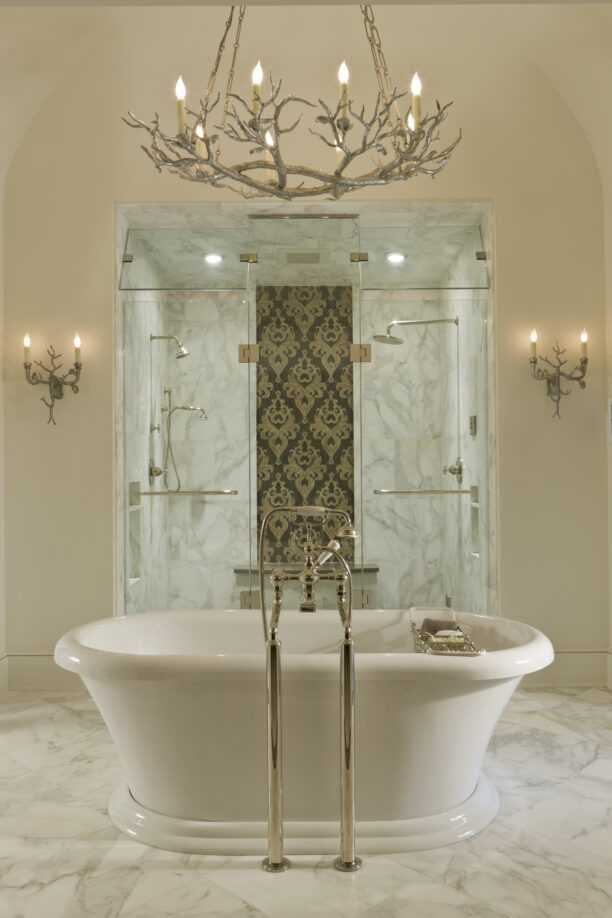


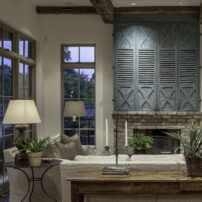

Beautiful photos and on-spot info in a worthwhile new site! Thanks!
Thank you for the kind words, Susan! So glad to hear you enjoyed and learned from the post.